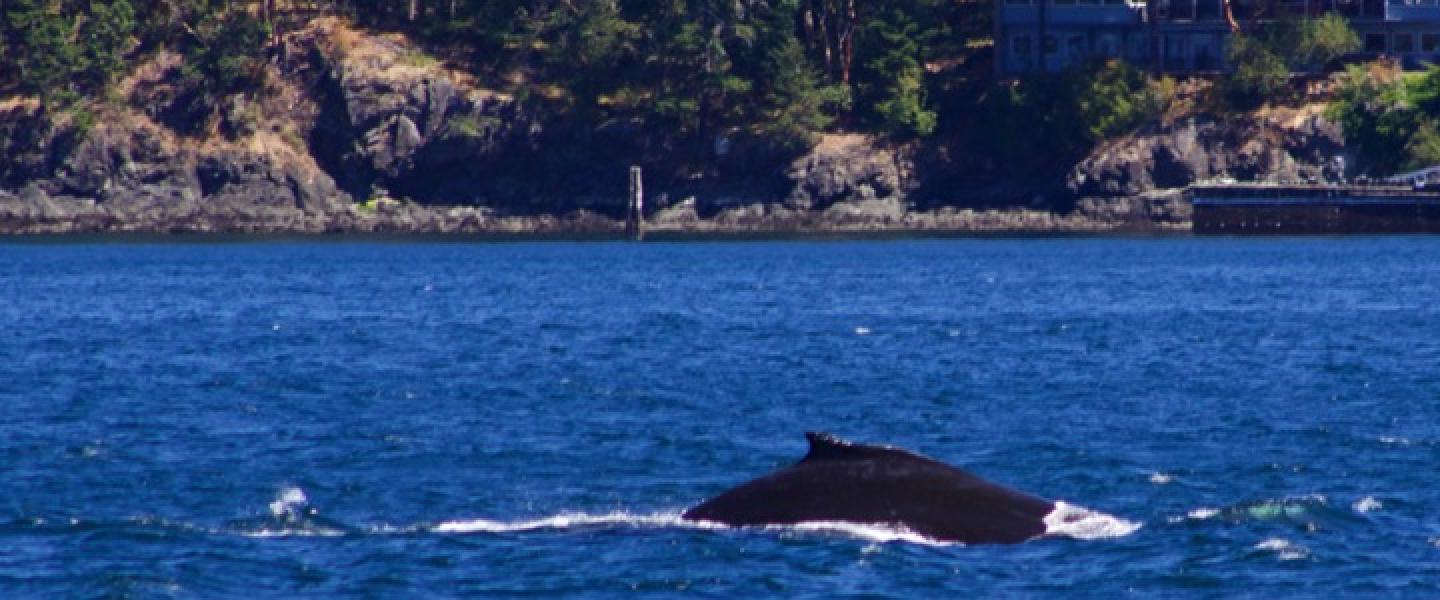
[Naturalist Erick D., M/V Kestrel, 7/26/17, 2:00PM]
On Wednesday, Captain Gabe and I took a full boat of excited folks along on the M/V Kestrel to go look for some marine wildlife. That day it was a bit windy down south so we headed north to go look in Boundary Pass, Haro Strait and in between the southernmost of the Southern Gulf Islands just across the border in British Columbia.
Our First stop was to look at some Bald Eagles around Sentinel Island. There was one perched prominently on a branch just on the shoreline and there was another that soared from the other side of the island back around us and back on to another tree facing where we were. We also saw an immature Bald Eagle soaring above too. (Side note: bald eagles don’t look like bald eagles until they are about 4 or 5 years old. Until then they are all brown.)
Check it out –
https://www.allaboutbirds.org/guide/Bald_Eagle/id
Next we scooted over to Sentinel Rocks, conveniently placed right next to Sentinel Island, to look at some adorable Harbor Seals. There was a bunch lying on the rocks tanning themselves and even more swimming in the kelp forest adjacent to the exposed rocks, and there were even some Harbor Seal pups! It is the middle of pupping season for the Pacific Harbor Seals here so there are a lot of wee, furry ones lying next to their tired mothers. Usually they are not very noisy animals but during pupping season the pups tend to make a lot more noise. They never sound how I expect them to sound and their noise may surprise you too!
Take a listen –
https://www.nefsc.noaa.gov/psb/acoustics/sounds.html
We left there to search around Haro Strait and some of the Islands and soon came across a bait ball. These are what we call masses of seabirds swirling around the water’s surface like a bird-nado. They are flying and diving in such a tight group because they have all spotted a large school of small fish close to the surface and are there to eat! We stop at these for two reasons. One, because it’s awesome to see so many different bird species diving and swimming and flying and coming up with 5 fish in their beaks, and two, because there is usually a marine mammal eating from the school of fish underneath and that is why the fish have schooled up so close to the surface. We watched this bait ball for a little bit till a seal popped its head up and looked at us a little surprised.
Time to move on. Next we headed along Boundary Pass, which has great views of the Islands, snowcapped Mt. Baker, and some lighthouses. We made it all the way to Patos Island (where one of those light houses are) and saw a blow! It was a whale, and not just any whale, a Humpback Whale! This was not a completely full grown one. We did get to see it do some deep, feeding dives, showing its flukes, and it even did a pectoral slap at one point. This Humpback had an almost all white underside to its fluke. We watched it for awhile as it swam and fed around Patos Island and through the constant movement of Boiling Reef in between Patos Island and Saturna Island. It still amazes me to see these Humpbacks in here just knowing that they were hunted so heavily in this area and were gone for quite a while. It is definitely a conservation success story to see the increase in their numbers and see them returning more and more to the inland waters.
Whale folks until next time,
Naturalist Erick